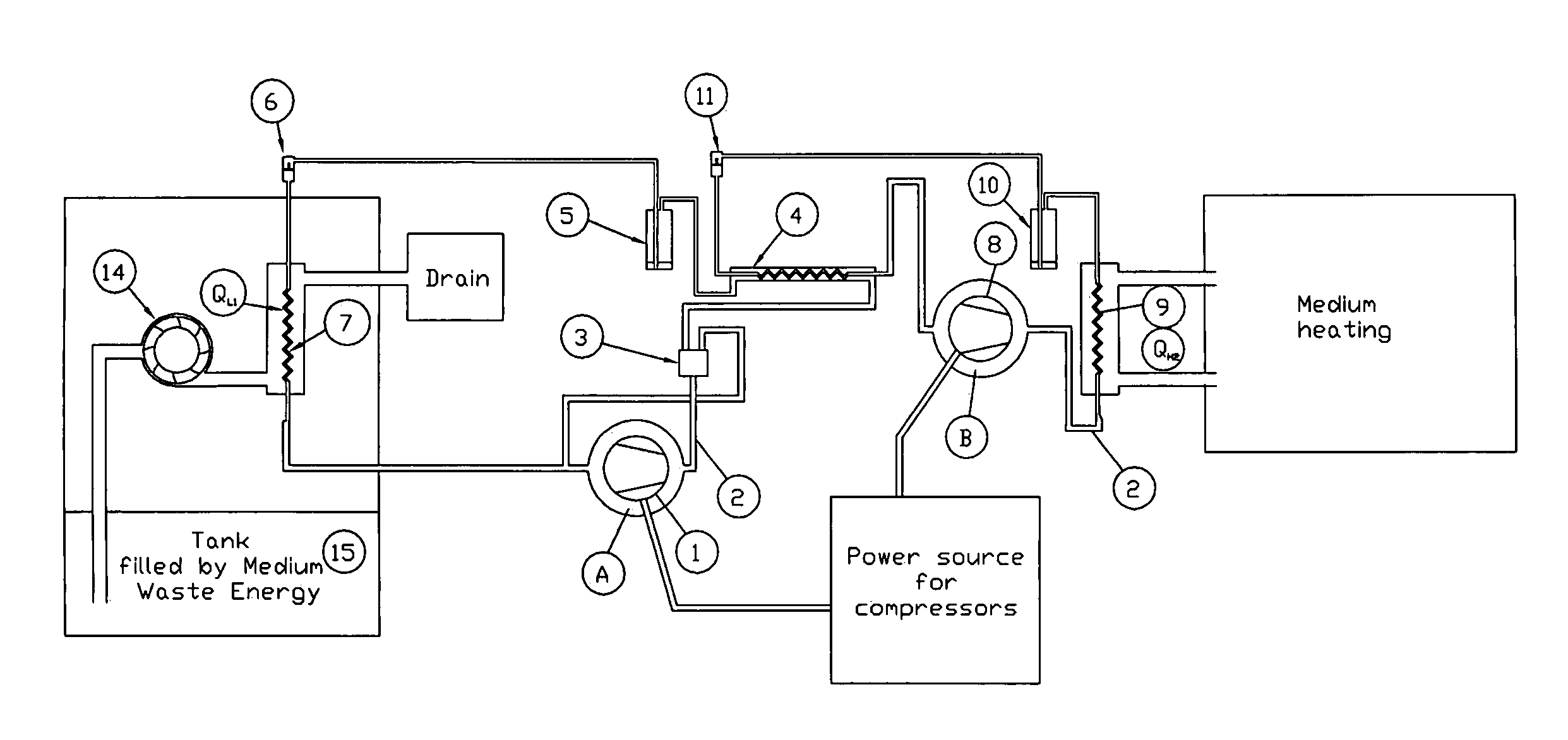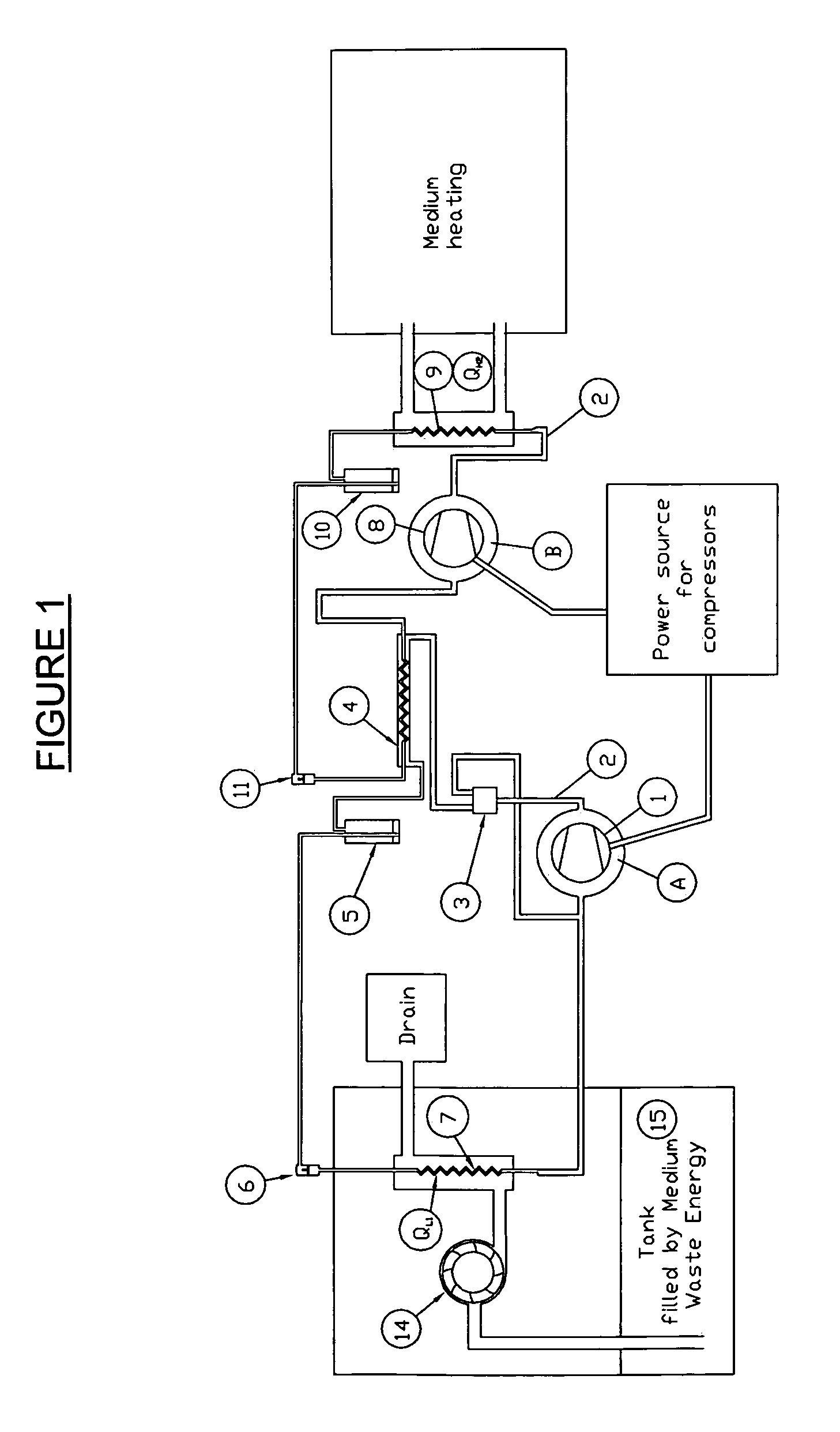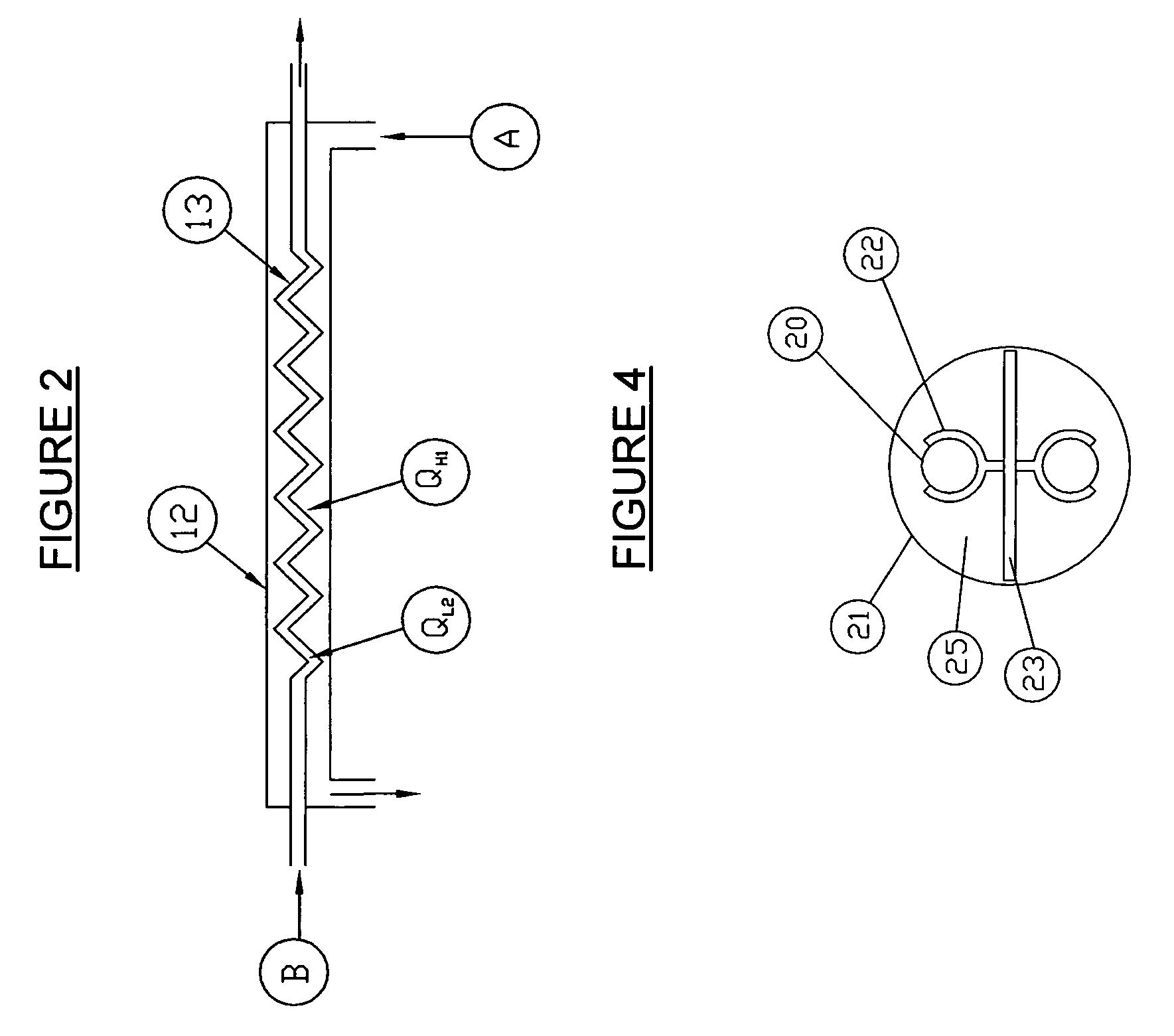Heat exchange system with two single closed loops
a heat exchange system and closed loop technology, applied in the direction of heat exchange fuel, stationary tubular conduit assembly, other heat production devices, etc., can solve the problems of loss of heat pump cannot perform both heating and cooling duties at maximum efficiency, and lose efficiency in this design, etc., to achieve optimal performance efficiency, good and unique combination, and efficiency loss
- Summary
- Abstract
- Description
- Claims
- Application Information
AI Technical Summary
Benefits of technology
Problems solved by technology
Method used
Image
Examples
Embodiment Construction
[0042]The present invention optimizes known prior art systems into a cascade of heat exchange. There are two closed loops (see FIGS. 1 and 3) that can be integrated together to yield optimal results. Referring now to FIGS. 1 and 2:
[0043]First loop comprises a copper piping system 2 filled with refrigerant A. The refrigerant A, in vapor form, is compressed by a scroll or screw compressor 1 thus turning into a liquid in the outer cylinder 12 of a transfer unit 4. Outer cylinder 12 has inlet and outlet to facilitate circulation of refrigerant A within the first loop. Refrigerant A has a condenser capacity QH1 and is provided to transfer latent heat to the refrigerant B to an inner coil 13 placed within said transfer unit 4 in coaxial manner. Inner coil 13 is provided with an inlet and outlet to facilitate circulation of refrigerant B within the second loop. Refrigerant B has an evaporator capacity QL2. A by-pass valve 3 is located between the outer cylinder 12 of transfer unit 4 and th...
PUM
 Login to View More
Login to View More Abstract
Description
Claims
Application Information
 Login to View More
Login to View More - R&D
- Intellectual Property
- Life Sciences
- Materials
- Tech Scout
- Unparalleled Data Quality
- Higher Quality Content
- 60% Fewer Hallucinations
Browse by: Latest US Patents, China's latest patents, Technical Efficacy Thesaurus, Application Domain, Technology Topic, Popular Technical Reports.
© 2025 PatSnap. All rights reserved.Legal|Privacy policy|Modern Slavery Act Transparency Statement|Sitemap|About US| Contact US: help@patsnap.com



